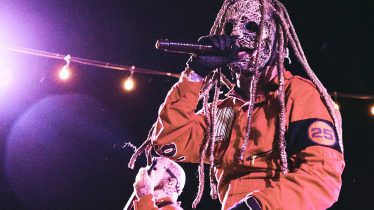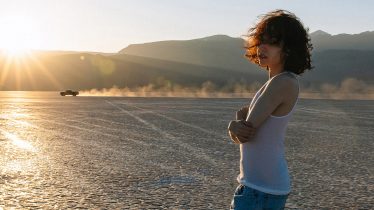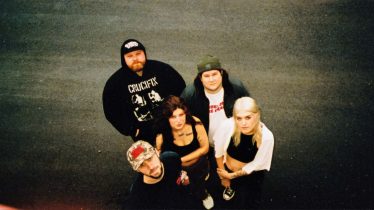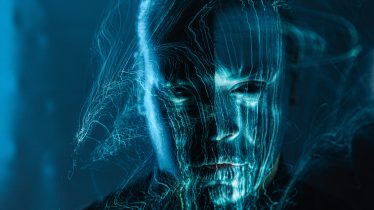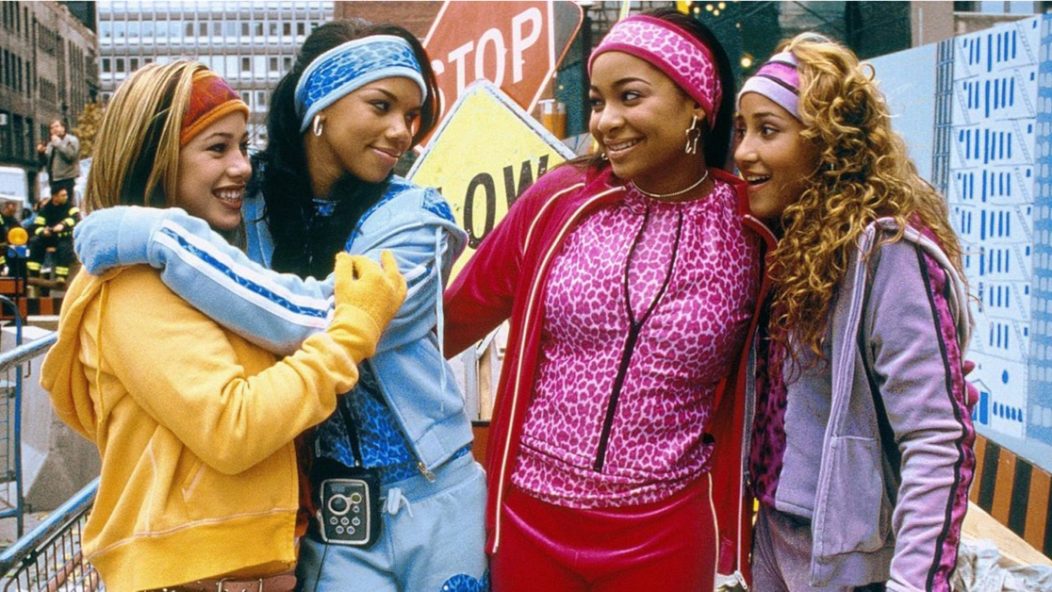
The Cheetah Girls at 20: how the girl group changed Disney Channel
Twenty years ago, Raven-Symoné, Adrienne Bailon, Sabrina Bryan, and Kiely Williams starred in The Cheetah Girls, a Disney Channel Original Movie that shaped a generation.
Before the Cheetah Girls were brought to life as a pop and R&B girl group in 2003, they existed on the pages of Deborah Gregory’s Cheetah Girls book series. Gregory was sought out by Hyperion Books for Children’s “Jump at the Sun” imprint, "which launched in fall 1998 with the mission of celebrating the African-American experience and culture."
Read more: The Spectacular Now: 10 years later with director James Ponsoldt
Gregory’s first Cheetah Girls book for the imprint hadn’t been published yet when her concept caught the attention of producers. Debra Martin Chase, who co-executive produced the film with Whitney Houston, told The Hollywood Reporter that Disney Channel rejected her original vision of a Cheetah Girls TV show. “They said, ‘We can’t sell this. Basically, no one is going to believe that these girls — these Black girls living on Park Avenue — exist.’ I was furious. To his credit, Gary Marsh [former president of Disney Branded Television] said, ‘Look, I can’t control series but I do control the movies. If you turn it into a movie, I’ll make it,’” Chase recalled.
The first film to be advertised as a Disney Channel Original Movie was Northern Lights starring Diane Keaton in 1997, but DCOMs soon became much more tween-centric. “Where we won was [when] we came and focused on young people,” says Tina Treadwell, former VP of talent development, casting and alternative programming at Disney Channel. That same year, Treadwell developed a series of In Concert specials featuring former Mousketeers Britney Spears, *NSYNC, and other household names. In Concert ended, Treadwell explains, because it was not “evergreen” and could only be rerun for so long. However, a movie or series with original music would have more longevity and could create synergy for Disney.
“Every Monday, right after one of these concerts would air, the sales figures for whatever artist it was would go through the roof, after millions of people watched their live concert special and heard about their life,” says Steven Vincent, senior VP of music and soundtracks for Disney Branded Television. “So it was like, well, that's making a whole bunch of money for all of these external companies, but really, maybe there's a way to do that and have it benefit Disney and create our own pop stars.”
Jay Landers was senior VP of A&R at Walt Disney Records, looking to revitalize the label in the 2000s. He mentions that Annette Funicello was “fully synergized throughout the company before that term was widely used. So, I thought maybe the best place to get things going here at Disney Records would be to turn the Disney kids, the stars from the Disney Channel, into singers.” The first piece of the puzzle was Hilary Duff, whose popularity as the star of Lizzie McGuire was undeniable. “I made a deal with the Disney Channel to put out a Lizzie McGuire soundtrack,” says Landers. Duff was also included on the first Disneymania soundtrack before her debut Santa Claus Lane album. Though Landers’ plan wasn’t popular at first, it worked — and the rest is history.
Where Hilary Duff was Disney Channel’s first major in-house solo artist, The Cheetah Girls were the first group to bring music to the forefront of the Disney Channel Original Movie brand.
Assembling a cast that reflected the diversity of Gregory’s characters — and of Disney Channel’s viewers — was important. “It was kind of a no-brainer that Raven would be a part of The Cheetah Girls, because she was the face of the network. She sang, she danced, she acted, did all those things,” Treadwell says. Adrienne Bailon and Kiely Williams also had a relationship with Disney Channel, having appeared on an episode of The Jersey while in the girl group 3LW. Solange Knowles was originally going to portray Williams’ character, Aqua, but was unable to continue with the project.
The group was completed with Sabrina Bryan as Dorinda. Bryan recalls, “Being on the channel was like the it thing. Of course, booking any TV show would be great. But the channel was just this epic goal that I think anyone that was auditioning had.” She remembers seeing Christy Carlson Romano on the 21st floor of the Disney Channel building, where auditions took place. “You're just like, ‘Oh my gosh, she's made it. This is it,’” Bryan says. Although she was asked to read for all four parts, she connected with Dorinda and was thrilled to sing, dance, and act.
“On my personal albums, it was more R&B and a little bit slower,” says Raven-Symoné. She enjoyed the pop elements in the music as she had the girl group experience for the first time. “Normally when I'm doing music, I have a whole bunch of guy dancers with me. So I'm used to that masculine energy. And I was like, ‘Okay, I'm going to be the dude in this scenario. Understood.’ It was fun to be able to share the stage with other really talented females and not have to hold the weight of the world on only my shoulders. I could share the stage,” she says.
The soundtrack for The Cheetah Girls was released August 12, 2003. “We weren't even sure if we were going to do a soundtrack album because it was kind of the first one. And then it was like, ‘Well, if we're ever going to do one…’” Vincent says. “‘It's original music. We've got four or five songs and then a couple of licensed songs that we can add to the album. You know, let's just see what happens.’ And the label was on board to be partners for that. But nobody knew what this was going to be.”
Greg Cham worked as a music supervisor alongside his brother, the late music producer Ray Cham. The duo had years of industry experience and had worked with Disney Channel on the 2002 DCOM Gotta Kick It Up! Greg remembers that for The Cheetah Girls, “Everyone involved with the project had a particular sort of idea of what the music should sound like.” It was important to strike the right balance between pop and R&B. Destiny’s Child, En Vogue, and TLC were inspirations.
“Ray always had a home studio, so all of the pre-production took place in those studios. And I'm pretty sure he recorded all of the live instrumentation in his studio, as well,” Greg says. “The only thing that we recorded outside of his studio were typically the group's vocals. And we worked with Tal Herzberg, amazing, amazing, amazing engineer.” The Cheetah Girls recorded at Herzberg’s studio in Studio City. The movie was shot in Toronto.
In the very first scene of the film, The Cheetahs perform “Together We Can,” written by Will Robinson, Steve Lee, and Walter Turbitt. The energetic number rolls along with pulsating rhythms and imaginative lyrics: “Together we can shoot the moon, stop the rain, even ride a hurricane.” The song was originally written for Inspector Gadget 2 but had not been used in that film.
“We came up with what we thought was really a cool, fun, up-tempo, vibey song,” says Robinson, who remembers laughing with his co-writers as they created these “zany, wacky lyrics” for the Inspector Gadget installment. About a year later, Brian Rawlings, former VP of music publishing at Disney, called him about using the song for The Cheetah Girls, with a few lyric rewrites. Robinson was invited back as a co-writer for The Cheetah Girls 2, working with Jamie Houston on “Amigas Cheetahs.”
“Cinderella” had other lives before it became a Cheetah Girls song. It was originally sung by an international girl group called i5, then by the Swedish girl group Play (whose “Us Against the World” had been featured on Lizzie McGuire).
Lindy Robbins co-wrote the pop hit and came up with the lyrics and melody in her car, a capella. Robbins says, “It just popped into my head, which is how I write most of my songs. They just come to me.” Kevin Savigar worked on tracks and helped formulate chords, setting the scene with minor-key arpeggiated accompaniment. Jay Landers was in touch with Debra Martin Chase and helped “Cinderella” find its way to The Cheetah Girls. In versions sung by other girl groups, the chorus includes the line, “I don’t wanna be like Snow White waiting for a handsome prince to come and save me.” For The Cheetah Girls, that line was changed to “I don’t wanna be like someone waiting for a handsome prince to come and save me.”
“[Roy E. Disney] had this very, very hard-line attitude that the Disney characters should not acknowledge each other, that they should all be in separate universes,” says Landers, explaining that this mentality carried over to the pop song. Despite the change, the lyrics have stood the test of time.
Filming “Cinderella” for the talent show audition scene made a huge impression on Sabrina Bryan. “There weren't a lot of people in the audience. We were creating the energy of that music within the four of us. Really it was just the crew that was in the audience,” Bryan remembers.
Raven-Symoné’s mom saw the magic in “Cinderella” right away. “She loves ‘Cinderella’ so much that she watched and listened to that song on repeat,” Raven-Symoné says, singing a bit of the chorus. “It was so interesting because when I was singing it, I didn't hear the words. I just sang it because I knew I had a job to do and I had to get it done. I go back now and I'm like, ‘Oh, snap. Talk about girl power.’”
The group next sings “Girl Power,” by Ray Cham and Rwaana M. Barnes, when they’re trying to get a record deal with Jackal Johnson. A glimmering piano line is juxtaposed with rich, percussive bass – a perfect combination for chic but powerful teen stars.
Greg Cham recalls, “There was always the desire from the label to make sure that each girl had the appropriate amount of time in each song as a feature.” That goal is accomplished in “Girl Power,” giving each Cheetah a closeup shot on her designated line. “Interestingly, it was a little bit of the kid version of Sex and the City in that some girls saw themselves as a Galleria, some saw [themselves as] more of a Dorinda. Because the girls were very distinct characters,” Vincent says.
From its enchanting descending scale on the piano to its wicked electric guitar solo by Rob “Fonksta” Bacon, “Cheetah Sisters” is the ultimate finale to this Cheetah chapter. Brian Rawlings asked Jamie Houston to come on board to write a theme song quickly for deadline purposes; Houston wrote “Cheetah Sisters” in a day, first creating the melody, then the lyrics, then singing the demo himself.
After reading the script, Houston explains, “I knew that it was, ‘these girls were a team and they were gonna take on the world together’ type of thing.” Two decades later, the song is an anthem.
Greg Cham says director Oz Scott “made sure that the spirit of the song was evoked in the film.” The finale occurs right after the feuding Cheetahs – coincidentally clad in coordinating Cheetah-print tracksuits – work together to rescue Galleria’s dog, Toto. Their nighttime performance lets the drama build to a crescendo. Toto is saved, and the girls are about to go their separate ways when Galleria starts singing, “There’s a time when we all choose…” The girls finish her sentence one by one, launching into advanced choreography and stunts. Their punchy declaration echoes throughout Disney Channel history: “We’re Cheetah Girls, Cheetah sisters.”
“By the end of the movie, they went out into the streets of New York and suddenly we had a big finale,” Vincent says. “It kind of then set the table for things that followed and even set the table for the second and third movie, which became break-into-song movies.”
Brian Rawlings says, “You think about where we were when MMC happened and the talent that was on that show that we let leave Disney and go to other record companies and go on with their careers. That's where we were at the Disney Channel in 1991.” Everything changed in the 2000s, and Rawlings considers each step “an iteration more than it is a complete redirection.” There were gradients of musical involvement in DCOMs, even right after The Cheetah Girls, with Stuck in the Suburbs and Pixel Perfect.
The remaining four songs on The Cheetah Girls album are Hope 7’s optimistic (and lovably 2000s) “Breakthrough,” Christie Mac’s tenderly-sung “End of the Line,” Char’s stylish “Girlfriend” (Raven-Symoné’s favorite), and a rap spoof called “C’mon,” for the talent show competitors Sonic Chaos.
Those involved in the 2003 DCOM and its soundtrack agree that The Cheetah Girls made High School Musical possible. Raven-Symoné says, “I love being first. I'll just say that. It's a great thing to have that sentence of, ‘You paved the way.’ It's interesting because not only were we music-forward, but we were also brown and Black.”
Sabrina Bryan says, “What I love the most is to now see the girls that were tiny girls back then that are boss ladies now and doing what they wanted when they were little watching us. Like, whenever that spark came in their mind, to know that we were a little bit behind that sparkle of saying, ‘You can do this. If this is what you want, work your butt off. You can do this.’ I don't think very many people get to really say that in their career. And it just feels like such a privilege to know that I was a big part of such a huge thing in so many ways.”
The soundtrack’s success was also rewarding. “First week was maybe five thousand units, it's like, ‘Okay, okay, it's just getting started, and it's getting promoted on the channel.’ Next week was maybe ten thousand units. It's like, ‘Hey, we're moving up the ladder,’” Greg Cham says. Sales started climbing, eventually hitting “100,000 units a week,” Cham adds. While working at a tanning salon, Bryan got a phone call from Debra Martin Chase herself, congratulating her on the album’s platinum status. There are photos of Raven-Symoné celebrating a platinum plaque with her family, songwriter Lindy Robbins, and Disney executives. Billboard later reported that the album had sold 2 million copies, so it actually went double-platinum.
Over the next five years, the Cheetahs took their dreams and their talent to Spain in The Cheetah Girls 2 – and Williams, Bryan, and Bailon became a real, touring girl group, making the DCOM franchise a trilogy with The Cheetah Girls: One World. The movies and the music celebrate girlhood, but they also celebrate inclusivity on an even deeper level.
As Bailon’s Chanel says, “You’re a Cheetah Girl because of who you are and what’s in your heart.” Millions of people all over the world are Cheetah Girls at heart, still singing along to “Cinderella” after two decades.
